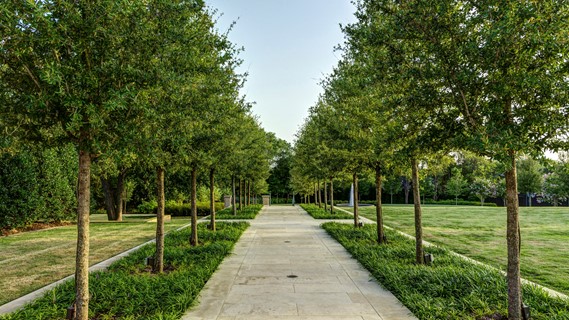Everything about Hilton Head Landscapes
Everything about Hilton Head Landscapes
Blog Article
An Unbiased View of Hilton Head Landscapes
Table of ContentsHilton Head Landscapes Can Be Fun For AnyoneThe Of Hilton Head LandscapesThe Buzz on Hilton Head Landscapes3 Simple Techniques For Hilton Head LandscapesSome Known Incorrect Statements About Hilton Head Landscapes The Main Principles Of Hilton Head Landscapes Excitement About Hilton Head LandscapesSee This Report on Hilton Head Landscapes
Form compatibility is likewise a major element of unity in designone or 2 noticeably different kinds benefit comparison and emphasis, however typically all various other forms ought to have some similarities for a combined appearance. Appearance refers to exactly how rugged or great the surface of the plant or hardscape material really feels and/or looks.
Instances of plants with coarse structure consist of philodendrons, agaves, bromeliads, hollies, hands, and hydrangeas. Hardscape with crude appearance consists of rough-cut rock, rough-finished block, and incomplete wood with knots and an elevated grain. Aged or old building material that preserves a weather-beaten surface is typically coarse in structure. Features that create great appearance consist of little foliage; thin, strappy leaves (turfs) or high, thin stems; small, dense twigs and little branches; long stems (vines); and tiny, fragile flowers.
See This Report on Hilton Head Landscapes
Many plants are moderate appearance, because they can not be described as having either crude or fine structure. They are defined by medium-sized leaves with easy shapes and smooth sides. The average-sized branches are not densely spaced neither commonly spaced, and the total form is generally rounded or mounding. Medium-textured plants act as a background to link and link the rugged- and fine-textured plants.

To make an area feel smaller, place the coarse structures along the external boundary and the fine structures closest to the viewer. The detail of the coarse texture makes the plants show up closer and makes the room really feel smaller sized. The regarded texture of plants can also alter with the distance from the plant.
The 7-Minute Rule for Hilton Head Landscapes
Strong shades raise the contrast and make the texture appear coarser, while low-key shades can flatten texture. Hardscape with a crude texturesuch as extremely rough rocks and vibrant, large timberstends to make all plant product appear a lot more average distinctive. Designers commonly develop a texture study (Figure 8) theoretically to assist determine the arrangement of plant products.
Number 8. Texture research. Color in plant product and hardscape adds passion and variety to the landscape. Shade is the most noticeable element in the landscape and is typically the emphasis of the majority of house owners; however, it is likewise one of the most momentary aspect, typically lasting just a couple of weeks a year for specific plants.
The 10-Minute Rule for Hilton Head Landscapes
An easy summary of the color wheel includes the three main colors of red, blue, and yellow; the three secondary shades (a mix of two primaries) of green, orange, and violet; and six tertiary colors (a mix of one nearby key and additional shade), such as red-orange. Color theory clarifies the relationship of colors to each other and just how they must be made use of in a make-up.

Similar (in some cases called unified) shade schemes are any kind of 3 to five colors that are surrounding on the color wheel, such as red, red-orange, orange, yellow-orange, and yellow, or blue, blue-violet, and violet (landscaping hilton head sc). The colors belong per various other due to the fact that they commonly include two primaries blended to form a second and two tertiary shades, which indicates they share common residential properties
Corresponding colors are often found naturally in blossoms; a typical pair is yellow and violet. Shade is located in the flowers, vegetation, bark, and fruit of plants.
The Best Strategy To Use For Hilton Head Landscapes
Green foliage in all its different shades is the dominant color by quantity, but various other shades capture attention much more easily because of their high comparison to the shade environment-friendly. Color is likewise found in buildings, rocks, pavers, timber, and furniture. Most colors in all-natural products, such as stone and timber, are generally low-key and tend to be variants of brown, tan, and light yellow.
Color is an essential aspect for developing interest and selection in the landscape. Colors have residential properties that can impact emotions, spatial perception, light high quality, equilibrium, and focus. One property of color is explained relative to temperaturecolors seem cool or warm and can affect feelings or sensations. Amazing colors tend to be relaxing and must be utilized in areas for relaxation and peacefulness.
Hilton Head Landscapes Can Be Fun For Anyone
The "temperature level" of colors can additionally affect top article the assumption of distance. Cool shades tend to recede and are perceived as being further away, making a space feel bigger. Warm colors often tend to development and are perceived as being closer, making an area really feel smaller. Shade can also be utilized to record attention and straight sights.
Intense yellow, which has the highest possible intensity, likewise has a high comparison with all various other colors (frequently defined as a "pop" of shade) and need to be used moderately. A percentage of intense color has as much visual weight as a big amount of an extra suppressed or weaker shade.
Analogous (in some cases called harmonious) color design are any three to five shades that are surrounding on the shade wheel, such as red, red-orange, orange, yellow-orange, and yellow, or blue, blue-violet, and violet. The colors are associated per various other because they normally consist of 2 primaries mixed to create an additional and two tertiary shades, which means they share common homes.
The Best Strategy To Use For Hilton Head Landscapes
Complementary shades are typically found normally in flowers; a typical pair is yellow and violet. Color is located in the blossoms, foliage, bark, and fruit of plants.
Environment-friendly vegetation in all its various tones is the dominant color by amount, however other colors catch focus quicker as a result of their high contrast to the color eco-friendly - Landscapers near me - https://allmyfaves.com/h1tnhdlndscps?tab=h1tnhdlndscps. Color is likewise discovered in structures, rocks, pavers, wood, and furniture. The majority of colors in natural materials, such as stone and wood, are usually low-key and tend to be variations of brown, tan, and pale yellow
Get This Report on Hilton Head Landscapes
Colors have homes that can impact emotions, spatial understanding, light high quality, balance, and emphasis. Great colors tend to be relaxing and ought to be utilized in locations for leisure and tranquility.
The "temperature" of shades can likewise influence the perception of range. Awesome shades tend to recede and are perceived as being farther away, making an area feel larger. Warm colors often tend to breakthrough and are viewed as being more detailed, making an area really feel smaller sized. Color can additionally be utilized to catch attention and direct sights.
For instance, bright yellow, which has the highest strength, also has a high comparison with all other shades (commonly referred to as a "pop" of shade) and must be conserved. A little amount of extreme color has as much aesthetic weight as a large quantity of a much more restrained or weaker shade.
Report this page